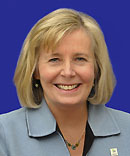SWLRT decision moves our region forward
April 2014
After years of study, hundreds of meetings, and a small mountain of public comments, the Metropolitan Council recently approved a proposal moving Southwest LRT forward in the planning process.
 The Council’s approval includes 16 stations, an operations and maintenance facility in Hopkins, and a western terminus within the City of Eden Prairie.
The Council’s approval includes 16 stations, an operations and maintenance facility in Hopkins, and a western terminus within the City of Eden Prairie.
A key element of the decision calls for shallow tunnels for LRT trains while freight rail and biking/walking trails remain at-grade through the Kenilworth corridor in Minneapolis.
The measure sends the plan forward for further consideration and more public input by the five cities along the line during the municipal consent process. This represents progress not just for the Southwest project, but for the future of transit expansion in our region.
Advancing the project proves to our funding partners, particularly the federal government, that we can make tough choices about transit as a region and that we’re ready for additional federal investment. In contrast, failing to advance the project would set back transit investments like streetcars, Bottineau, Gateway, Riverview and other corridors at least a decade. That outcome is unacceptable, which is why the Metropolitan Council will continue working closely with all the cities involved in giving Southwest LRT municipal consent.
When complete, the line will serve existing transportation needs and accommodate forecasted growth. The Southwest Corridor is projected to add 30,000 additional households and 60,000 additional jobs by 2030. That is more than any other part of the metropolitan area besides the Central Corridor, which the Green Line will begin serving June 14, 2014.
For many, Southwest is truly about opportunity. In terms of race, ethnicity and income, the Southwest LRT corridor as a whole is generally similar to Hennepin County and is both more diverse and less well-off than the seven-county Twin Cities metro area.
Several station areas have particularly high numbers of low-income residents, including Blake Road, Downtown Hopkins and Shady Oak Road. The Minneapolis stations of Royalston and Van White top the charts at 41% and 47% low-income residents, respectively.
The good news for these workers is that nearly 36,000 low-wage jobs exist within one-half mile of a planned Southwest LRT station. In fact, low-wage jobs are distributed along the entire Southwest LRT line.
Southwest makes a clear connection to employment, which is one good reason why the project must move forward now.
When the extension of the line is added, the METRO Green Line will run all the way from Lowertown in St. Paul to Eden Prairie and it will benefit the whole region.